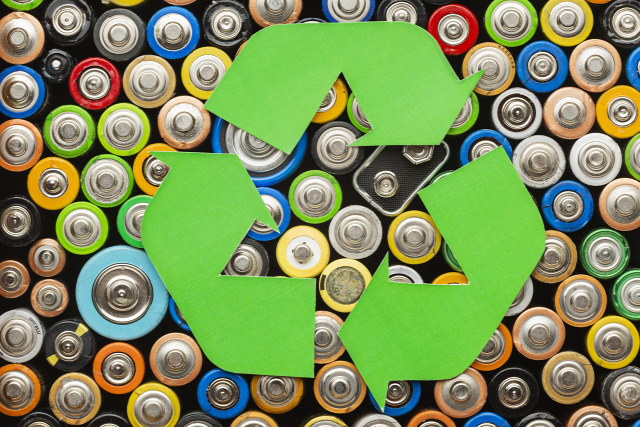 Mobility-as-a-Service (MaaS) is an innovative approach to transportation that integrates various modes of transport into a single, user-centric service. By allowing users to plan, book, and pay for different types of transportation services through a unified platform, MaaS is transforming the way people navigate urban environments. As urban areas become more congested and environmentally conscious, MaaS is emerging as a crucial component in the evolution of smart cities.
Mobility-as-a-Service (MaaS) is an innovative approach to transportation that integrates various modes of transport into a single, user-centric service. By allowing users to plan, book, and pay for different types of transportation services through a unified platform, MaaS is transforming the way people navigate urban environments. As urban areas become more congested and environmentally conscious, MaaS is emerging as a crucial component in the evolution of smart cities.
According to BIS Research Analysis, the global mobility-as-a-service market was valued at $77,661.9 million in 2023, and it is expected to grow at a CAGR of 25.67% and reach $7,60,207.2 million by 2033 during the forecast period of 2023-2033.
Understanding Mobility-as-a-Service
"Mobility-as-a-Service" aims to provide convenient, efficient, and sustainable transportation solutions by combining public transit, ride-sharing, bike-sharing, car rental, and other forms of transportation into a single, seamless service. Key components of MaaS include:
-
Integrated Mobility Platforms: Digital platforms and mobile applications that offer users access to multiple transportation options and provide real-time information, route planning, and payment solutions.
-
Flexible Transportation Options: A range of transportation modes, including buses, trains, bicycles, scooters, taxis, and car rentals, allowing users to choose the most suitable option for their journey.
-
Subscription Models: Users can pay per trip or subscribe to monthly packages that provide unlimited access to various transportation services.
-
Multi-Modal Transport Options: Combining different transport modes, such as buses, trains, bicycles, and shared cars, to provide efficient routes.
Key Market Dynamics
The global Mobility-as-a-Service industry is driven by several factors:
-
Urbanization and Congestion: Rapid urbanization has led to increased traffic congestion and environmental pollution, creating demand for efficient and sustainable transportation solutions.
-
Technological Advancements: The proliferation of smartphones, high-speed internet, and advancements in GPS and data analytics are enabling the development of sophisticated MaaS platforms.
-
Changing Consumer Preferences: Consumers are increasingly seeking convenience, flexibility, and personalized experiences in their transportation options.
-
Environmental Concerns: Rising awareness of climate change and the need to reduce carbon emissions are driving the adoption of sustainable transportation solutions.
-
Government Initiatives: Supportive government policies and investments in smart city infrastructure are promoting the development and adoption of MaaS solutions.
Request a sample of this report on the Mobility-as-a-Service Market
Global Mobility-as-a-Service Market Segmentation
Segmentation by Application:
-
Passenger Transportation
-
Freight Transportation
-
Micro-Mobility
Segmentation by Service:
-
On-the-Go Rides
-
Carpool
-
Ride Hailing
-
Logistics
-
Renting
-
Ride Sharing
Segmentation by Solution:
-
Payment Engines
-
Navigation Solutions
-
Connectivity Providers
-
Ticketing Solutions
-
Insurance Solutions
Segmentation by Region:
-
North America
-
Europe
-
Asia-Pacific
-
Rest-of-the-World
Global Market Challenges and Opportunities
While the MaaS market presents significant opportunities, it also faces several challenges:
-
Regulatory Hurdles
-
Data Privacy and Security
-
Infrastructure Limitations
-
Market Fragmentation
-
Integration Complexity
Conversely, the market presents numerous opportunities:
-
Technological Integration
-
Partnerships and Collaborations
-
Expansion into Emerging Markets
-
Focus on Sustainability
Get more detailed insights on Automotive Market Research Reports.
Future Global Market Prospects
The future of the Mobility-as-a-Service market looks promising, with several trends likely to shape its trajectory:
-
Autonomous Vehicles: The integration of self-driving cars into MaaS platforms could revolutionize urban transportation by enhancing safety and reducing operational costs.
-
AI and Predictive Analytics: Leveraging AI and analytics to optimize routes, manage demand, and improve user experience.
-
Personalization and Enhanced User Experience: Advancements in user interface design and personalization will enhance the overall user experience and drive adoption.
-
Expansion of Subscription Models: Increased adoption of subscription-based services offering users unlimited access to various transportation modes.
-
Focus on Inclusivity: MaaS platforms will increasingly focus on providing accessible transportation options for all users, including those with disabilities.
Talk to our Analyst to get a deeper insight of the market
Conclusion
The global Mobility-as-a-Service Industry is poised for significant growth, driven by urbanization, technological advancements, changing consumer preferences, environmental concerns, and government initiatives. By addressing challenges related to regulatory hurdles, data privacy, integration complexity, and infrastructure limitations, and leveraging opportunities in technological innovation, expansion in emerging markets, partnerships, and sustainability, the potential of this market to revolutionize urban transportation can be fully realized.
MaaS not only promises to enhance the efficiency and convenience of urban mobility but also contributes to the overall advancement of smart cities and sustainable transportation systems.





